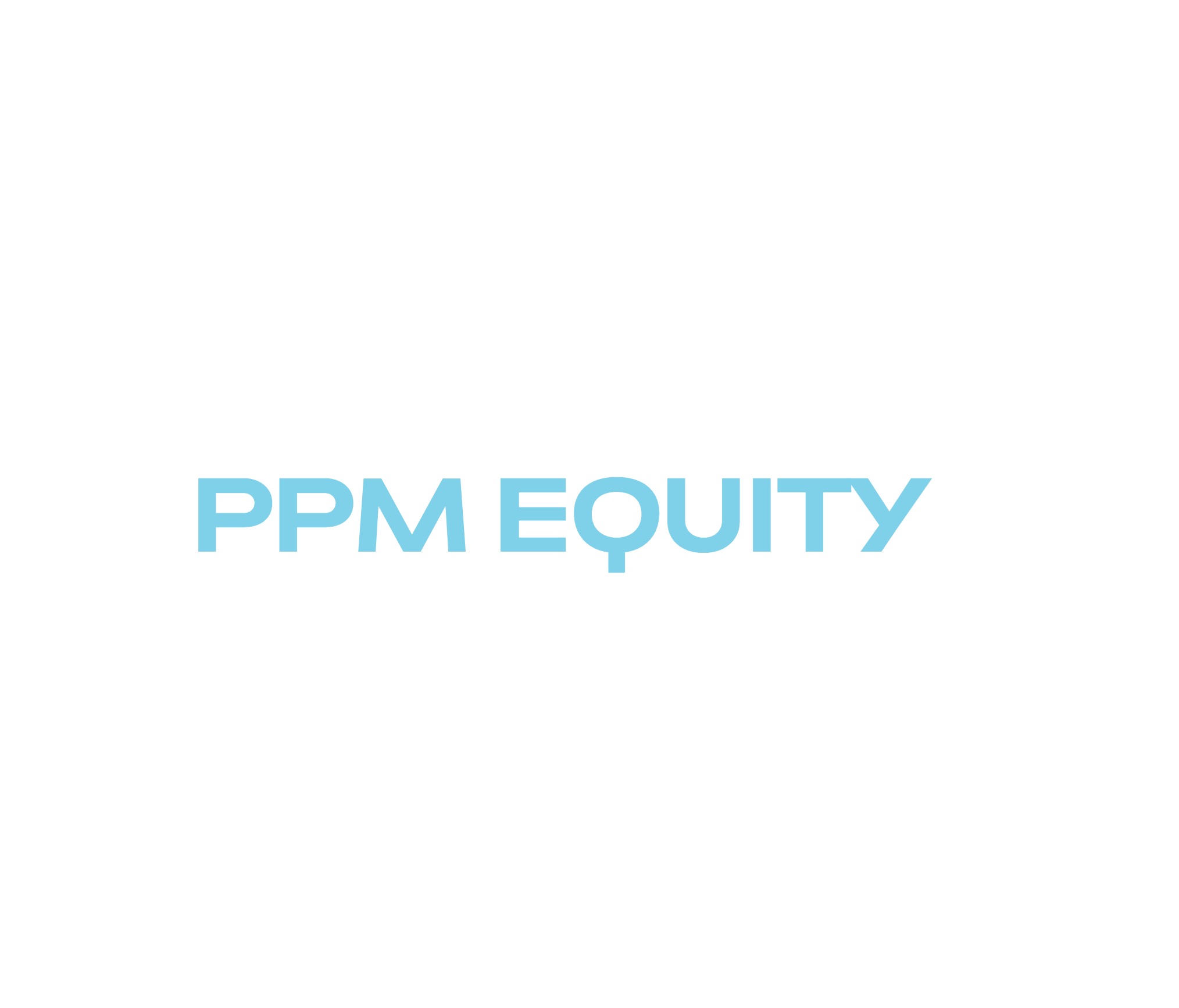Private Placement Memorandum
Market Movers: Economic Factors Shaping Private Placement Landscape
Global economic shifts, from interest rates to geopolitical tensions, dramatically impact private placement opportunities, but how?

Economic factors greatly influence the private placement landscape, shaping investment opportunities and risks for investors and issuers. Fluctuations in interest rates, inflation, and GDP growth have a profound impact on private placements. Rising interest rates increase borrowing costs, while falling rates make private placements more attractive. Inflation and market volatility pose challenges for investors, and regulatory changes require issuers to adapt. GDP growth rates and geopolitical factors, such as trade policies and political instability, also play a critical role in shaping the private placement market. As these factors continue to evolve, investors must stay informed to navigate the complex landscape and make informed decisions.
Key Takeaways
• Fluctuating interest rates impact private placement deals, with rising rates increasing borrowing costs and falling rates making them more attractive.
• Inflation affects private placements by increasing the cost of capital, but they can also offer a hedge against inflation due to fixed-income characteristics.
• Market volatility poses challenges for private placements, making risk management strategies crucial, and diversification helps reduce exposure to inflation risk.
• Regulatory changes, such as the Dodd-Frank Act and Volcker Rule, impact private placement practices, and issuers must navigate evolving frameworks for compliance.
• GDP growth rates influence private equity firms' market opportunities and risks, with changes in GDP growth affecting investor confidence and market volatility.
Interest Rates and Investment

As interest rates fluctuate, private placement investments feel the ripple effect, with rising rates potentially stifling demand and falling rates sparking renewed interest.
Rising interest rates can increase borrowing costs for companies seeking financing, making private placements less attractive to investors. As a result, investors may seek higher returns in other investment avenues, reducing demand for private placements.
On the other hand, falling interest rates can make private placements more attractive in a low-yield environment, as investors seek stable returns. The movement of interest rates also influences the pricing and terms of private placement deals, affecting both issuers and investors.
For issuers, higher interest rates can lead to higher borrowing costs, while investors may demand higher returns to compensate for the increased risk. Understanding the relationship between interest rates and private placement investments is essential for making informed investment decisions.
Inflation's Impact on Private Placements

Rising inflation rates are exerting significant pressure on private placements, driving up the cost of capital for both investors and borrowers. As inflation rises, higher interest rates can make private placements less attractive to investors, impacting the private equity landscape. However, private placements may offer a hedge against inflation due to their fixed-income characteristics.
| Investment Strategy | Inflation Mitigation | Investor Benefits |
|---|---|---|
| Diversification | Reduces exposure to inflation risk | Spreads risk across asset classes |
| Inflation-linked investments | Ties returns to inflation rate | Provides real returns |
| Active management | Adjusts portfolio to mitigate inflation | Enhances returns through due diligence |
| Operational efficiencies | Reduces costs, enhancing returns | Boosts investment performance |
Inflation's impact on private placements underscores the importance of monitoring economic factors for investment decisions. The Inflation Reduction Act, for instance, may influence investment opportunities in the private equity market. As investors navigate the private placement market, they must consider the implications of inflation on their investment strategies, seeking to balance returns with risk mitigation. By doing so, they can optimize their investment portfolios and achieve their financial goals.
Market Volatility and Risk

Market volatility poses a significant threat to private placements, exacerbating the challenges posed by inflation and introducing a new layer of uncertainty for investors. As a result, private equity firms are forced to re-evaluate their investment strategies and adapt to the shifting market landscape.
- Market volatility can lead to fluctuating asset prices, making it challenging for investors to accurately value their portfolios.
- Risk management strategies become vital during periods of market volatility to protect capital in private placements.
- Market instability may affect the availability of capital and the pricing of private placement securities, impacting deal activity and opportunities.
- Investors need to assess the impact of market volatility on their private placement portfolios and adjust strategies accordingly to maximize value.
In this environment, private equity firms must stay vigilant and responsive to market trends, ensuring their investment approaches are flexible and resilient. By doing so, they can navigate the uncertainty and capitalize on emerging opportunities in the private placement market.
Regulatory Changes and Compliance

Understanding the private placement landscape has become increasingly complex, with regulatory changes and compliance requirements playing a critical role in shaping the market.
Recent regulatory changes, such as the Dodd-Frank Act and the Volcker Rule, have had a substantial impact on private placement practices. These changes aim to enhance investor protection and transparency, ensuring that issuers adhere to stringent compliance requirements.
Private placement issuers must navigate the evolving regulatory frameworks set by the SEC or other regulatory bodies to guarantee compliance with securities laws. The primary goal of these regulatory changes is to balance investor interests, risk mitigation, and market stability.
By doing so, private placement issuers can effectively navigate the changing landscape. As regulatory changes continue to shape the private placement market, issuers must remain vigilant in their compliance efforts to uphold market stability and protect investors.
GDP Growth and Economic Indicators

As private placement issuers navigate the complexities of regulatory compliance, they must also contend with the far-reaching impact of GDP growth on their investment strategies. GDP growth rates have a profound influence on private equity firms, shaping their market opportunities and investment risks.
Changes in GDP growth can greatly affect investor confidence, market volatility, and even consumer spending patterns.
GDP growth serves as a critical economic indicator, reflecting the overall health and performance of a country's economy. Private equity firms closely monitor GDP growth rates to gauge market opportunities and assess investment risks.
Understanding GDP growth trends helps private equity investors make informed decisions on capital allocation and timing of investments. Economic indicators like GDP growth inform private placement landscape dynamics, guiding strategic moves and investment opportunities.
Consumer Spending and Demand

How do shifts in consumer spending patterns, which drive nearly three-quarters of the U.S. economy, impact private placement investment opportunities?
Firms and private equity industry players closely monitor consumer spending trends, as they're key indicators of economic health. Strong consumer demand signals a thriving economy, while weak demand can indicate economic challenges.
Shifts in consumer behavior, such as increased online shopping or preferences for sustainable products, greatly impact market dynamics. As consumer spending patterns change, deal activity in certain sectors may increase or decrease, presenting investment opportunities for firms.
For instance, growth in e-commerce may attract investors to the retail sector, while declining spending on traditional brick-and-mortar stores may deter investment. By analyzing consumer spending trends, firms can gain valuable insights into economic growth and identify potential investment opportunities in various sectors.
As consumer spending drives economic growth, understanding these trends is essential for private placement investors seeking to capitalize on emerging opportunities in the market.
Global Trade Patterns and Trends

Global trade patterns have undergone significant changes in recent years, driven by geopolitical tensions, shifts in trade agreements, and rapid technological advancements that have reshaped the flow of goods and services across borders.
These changes have had a profound impact on global trade dynamics, particularly in emerging markets like China and India, which have become major players in shaping global trade patterns. Regional trade blocs, such as the European Union, have also influenced trade agreements and patterns.
Some key trends shaping global trade patterns and trends include:
- The rise of e-commerce, which has transformed cross-border trade and supply chain networks
- The growing importance of emerging markets, particularly China and India
- The impact of tariffs, sanctions, and trade disputes on global trade flows and investment decisions
- The role of regional trade blocs, such as the European Union, in shaping trade agreements and patterns
Geopolitical Factors in Play

Geopolitical tensions and policy shifts are increasingly influencing private equity investments. Trade policies, sanctions, and political instability create an uncertain environment for investors. This uncertainty affects investment decisions in private placements. Changes in global regulations and tariffs introduce new risks.
Geopolitical events like Brexit, trade wars, and tensions between nations impact market sentiment and influence investment strategies. The private placement landscape is particularly vulnerable to geopolitical risks in regions like the Middle East, Asia-Pacific, and Europe.
Elections, regime changes, and international conflicts can lead to market volatility in private placements, making it challenging for investors to make informed decisions. As a result, investors must carefully consider geopolitical factors when making investment decisions.
Frequently Asked Questions
How Do Central Banks Influence Private Placement Markets Indirectly?
Central banks influence private placement markets indirectly by setting interest rates and regulating money supply. When they lower interest rates, borrowing becomes cheaper, and investors seek higher returns through private placements.
Conversely, higher interest rates make borrowing more expensive, reducing demand for private placements. Additionally, central banks' monetary policies affect economic growth, which in turn impacts the attractiveness of private placements as an investment option.
Can Private Placements Hedge Against Currency Fluctuations Effectively?
She examines whether private placements can effectively hedge against currency fluctuations. Since private placements often involve cross-border transactions, they're exposed to currency risks.
However, by incorporating hedging strategies, such as forward contracts or options, investors can mitigate these risks. Successful hedging can minimize losses and guarantee more predictable returns, making private placements a more attractive investment option in a volatile currency market.
What Role Do Family Offices Play in Private Placement Investments?
Family offices play a significant role in private placement investments. They leverage their wealth and expertise to diversify portfolios. They often invest directly in private companies, bypassing traditional funding routes.
With a long-term approach, family offices focus on strategic growth rather than quick returns. This patient capital enables them to ride out market fluctuations, providing stability to private placements.
Their influence is substantial, as they can single-handedly fund entire projects or co-invest with other investors.
How Do Private Placements Compare to Traditional IPOS in Costs?
Private placements and traditional IPOs differ notably in costs. Private placements typically involve lower upfront costs, with legal and administrative fees ranging from $50,000 to $200,000.
In contrast, traditional IPOs can incur costs upwards of $1 million to $5 million, including underwriting fees, legal fees, and regulatory compliance costs.
Additionally, private placements often have lower ongoing costs, as they aren't publicly traded, reducing reporting and compliance expenses.
Are Private Placements More Accessible to Retail Investors Now?
Private placements aren't typically accessible to retail investors, as they usually require a significant investment minimum. However, some online platforms and fintech companies are changing this landscape. They're creating opportunities for retail investors to invest in private placements, often with lower minimums.
This shift could democratize access to private placements, allowing individual investors to participate in deals previously reserved for institutional investors.
Conclusion
To wrap up, the private placement landscape is a delicate dance of interconnected economic factors. As interest rates fluctuate, inflation whispers sweet nothings to investors, and market volatility rattles the cages of even the most seasoned players.
Amidst this complex waltz, regulatory changes and GDP growth take center stage, while consumer spending and global trade patterns provide the subtle yet essential rhythms that shape the market's beat.
Private Placement Memorandum
Private Equity Playbook: Proven Strategies for Successful Investing
Leveraging proven strategies, private equity firms consistently outperform the market, but what sets them apart and how can you replicate their success?

Private equity firms leveraging proven strategies can consistently outperform the market and generate substantial returns. They target underperforming or undervalued companies, implementing operational improvements, and executing well-timed exits. Effective private equity investing involves identifying investment opportunities, building a strong portfolio, and executing operational improvements. Firms use revenue growth and diversification strategies, optimize financing and leverage, and prioritize risk management and value maximization. By implementing these strategies, private equity firms can achieve multiple expansion and create significant value. As investors explore these proven strategies, they'll uncover the intricacies of successful private equity investing.
Key Takeaways
• Private equity firms target underperforming companies with high growth potential, focusing on operational improvements and revenue expansion.
• Implementing operational excellence through partner groups drives revenue growth, profitability, and debt-free operations in select deals.
• Effective financing and leverage optimization involve balancing debt with risk management and incorporating hybrid financing models.
• Active governance and strategic oversight ensure operational improvements, drive growth, and maximize exit values through effective decision-making.
• Risk management and value maximization are achieved through thorough due diligence, diversification, and multiple expansion to maximize exit values.
Identifying Investment Opportunities

Through a combination of market research and careful examination, private equity firms meticulously identify investment opportunities in underperforming companies with potential for rapid improvement or undervalued companies with unrecognized potential. These firms employ various strategies and tactics to uncover hidden gems, focusing on companies that can benefit from operational improvements, revenue growth, and margin expansion. Private equity funds invest in these opportunities, aiming to create value within a defined investment horizon.
In their pursuit of value creation in private equity, firms engage in thorough evaluation, appraising a company's potential for short to medium-term growth. They analyze market trends, financial statements, and operational efficiency to identify areas for improvement. By applying their expertise and resources, private equity firms can reveal a company's hidden potential, driving value creation and generating returns for investors. By doing so, they create a win-win situation for all stakeholders involved.
Building a Strong Portfolio

Private equity firms carefully curate their portfolios by acquiring underperforming companies with potential for rapid improvement, focusing on swift ownership and management changes to realize value within a set timeframe. This approach enables them to capitalize on short to medium-term value-creation opportunities.
To maximize value creation, portfolio companies must target an average annual EBITDA growth of 20%. Successful private equity strategies involve leveraging debt to amplify returns while managing associated risks. Debt leveraging allows firms to generate higher returns on investment, but it's essential to balance this with risk management to avoid potential pitfalls.
Operational Improvements Strategies

Firms implement operational improvements to reveal hidden value in their portfolio companies, driving significant revenue growth and profitability enhancements. Private equity firms focus on operational improvements to enhance portfolio company performance. Operational partner groups play a key role in driving value creation through operational enhancements. They identify areas of inefficiency and implement changes to streamline processes, reduce costs, and increase productivity.
Access to operating resources is essential for private equity firms to successfully execute their value creation strategies. In mature company buyout deals, operational improvements are particularly emphasized to reveal hidden value. Moreover, venture capital and growth equity segments often aim for debt-free operations to maximize operational value creation.
Revenue Growth and Diversification

By driving revenue growth and diversifying income streams, private equity investors can realize significant value in their portfolio companies, often yielding substantial returns on investment. Revenue growth is a key driver of value creation in private equity, with companies experiencing significant multiple expansion post-global financial crises.
EBITDA expansion plays an essential role in buyout deals, showcasing the importance of operational improvements in private equity investments.
Some key strategies for achieving revenue growth and diversification include:
- Focusing on operational improvements to drive EBITDA expansion
- Diversifying revenue streams to reduce dependence on a single income source
- Optimizing capital structure to support growth initiatives
- Leveraging operational partner groups to access operating resources and drive value creation
Effective Leverage and Financing

Private equity firms understand that effective leverage and financing strategies are essential to maximizing returns on investment. They must navigate a range of debt financing options, equity financing strategies, and hybrid financing models to optimize their capital structure.
Debt Financing Options
To effectively leverage debt financing, private equity investors can tap into a range of options, including senior loans, subordinated loans, preferred equity, and seller financing. These debt financing options play a significant role in private equity acquisitions, which typically involve leveraging debt at around 4-4.5x Debt-to-EBITDA multiples for deals under $250 million.
Some key aspects of debt financing options include:
- Debt pricing has slightly decreased over the past decade, making debt financing more attractive for private equity investments.
- Leveraging debt effectively can amplify returns in private equity investments but also increases financial risks associated with the investment.
- Private equity-owned companies often allocate cash flow towards debt repayment due to the high levels of debt incurred during acquisitions.
- Debt financing options can be tailored to suit the specific needs of a private equity investment, allowing for greater flexibility and control.
Equity Financing Strategies
Equity financing strategies play a vital role in private equity investments, as they enable investors to optimize returns by effectively leveraging debt and financing options. Private equity firms often employ debt financing to amplify returns, with average debt-to-EBITDA multiples ranging from 4-4.5x for deals under $250 million. This approach allows firms to allocate cash flow towards debt repayment, ultimately enhancing returns.
Financing sources for these deals include senior loans, subordinated loans, preferred equity, and seller financing. Surprisingly, debt pricing has decreased slightly over the past decade, making debt financing a more attractive option. Additionally, debt recapitalization is a common post-deleveraging strategy in private equity investments, aimed at optimizing returns.
Hybrid Financing Models
Hybrid financing models, which combine equity and debt financing, have become a cornerstone of private equity investments, enabling firms to craft tailored financing structures that amplify returns while mitigating risk.
By blending equity injections with various debt instruments, such as senior loans and subordinated debt, private equity investors can enhance value creation.
Private equity firms often use hybrid financing to fund acquisitions, growth initiatives, and operational improvements. Effective leverage and financing strategies within hybrid models can amplify returns and optimize capital structures in private equity investments. This approach allows firms to maximize returns while managing risks through a strategic mix of capital sources.
Some key benefits of hybrid financing models include:
- Optimized capital structures that balance debt and equity
- Enhanced value creation through strategic financing decisions
- Improved risk management through diversified capital sources
- Increased returns through effective leverage strategies
Active Management and Governance

Private equity firms prioritize active management and governance to drive value creation in their portfolio companies.
Effective board structures, proactive portfolio oversight, and strategic value addition are essential components of this approach.
Effective Board Structure
By establishing a clear and active board structure, private equity firms can drive operational improvements, strategic planning, and successful exits, ultimately maximizing value creation.
Effective board structures in private equity involve enhancing business optics and operational performance to maximize value creation. Private equity investors create management incentive pools to align interests and tie incentive plans to performance. This alignment guarantees that management's interests are tied to the firm's performance, driving growth and profitability.
Key elements of effective board structures include:
- *Active board engagement* to drive operational improvements, strategic planning, and successful exits
- *Management incentive pools* to align interests and tie incentive plans to performance
- *Governance structures* that emphasize strong leadership teams and standardized processes for value-creation plan execution
- *Board structures* that enhance business optics and operational performance to maximize value creation
Proactive Portfolio Oversight
With effective board structures in place, private equity firms can now focus on proactive portfolio oversight, actively managing and governing their investments to drive growth and value creation.
This involves hands-on involvement in portfolio companies to drive operational improvements and value creation. Governance plays an important role in overseeing portfolio companies, ensuring alignment of interests, and implementing strategic initiatives for growth.
Private equity firms with strong governance structures tend to outperform those with weaker oversight, showcasing the importance of proactive portfolio oversight.
Active management and governance are key components of successful private equity investing, enabling firms to navigate challenges and capitalize on growth opportunities.
Effective portfolio oversight through active management and governance contributes significantly to the overall success and value creation within private equity investments.
Strategic Value Addition
Through strategic value addition, private equity firms drive operational improvements and implement targeted initiatives to reveal hidden potential within their portfolio companies. This active management approach enables firms to create value through various strategic initiatives, including debt restructuring and financial engineering to optimize capital structures. By leveraging institutional ownership, private equity firms guarantee strong governance and effective decision-making processes, which are critical for driving value creation.
Some key aspects of strategic value addition include:
- Operational partner groups providing access to specialized resources and expertise to drive operational improvements
- Implementing multiple expansion, margin optimization, and revenue growth strategies to enhance portfolio company performance
- Fostering a culture of continuous improvement and innovation within portfolio companies
- Developing and executing tailored strategies for each portfolio company to maximize value creation
Market Expansion and Development

As private equity firms seek to drive growth and value creation in their portfolio companies, they often prioritize market expansion and development strategies that can catapult their investments to the next level. By leveraging their expertise and resources, private equity investors aim to support portfolio companies in capturing market opportunities and accelerating growth.
Market expansion efforts can include entering new geographic regions, targeting new customer segments, or introducing innovative products and services. These strategies can lead to increased revenues, improved margins, and enhanced competitiveness for portfolio companies.
Additionally, market development initiatives are essential for maximizing the potential of portfolio companies and achieving successful exits in the private equity space. By focusing on market expansion and development, private equity firms can create value and drive growth in their portfolio companies, ultimately leading to successful investments and returns.
Effective market expansion and development strategies are vital for private equity firms to achieve their investment goals and create long-term value.
Margin Optimization Techniques

Private equity firms aggressively pursue margin optimization techniques to reveal hidden value in their portfolio companies and drive profitability. By implementing these strategies, firms can greatly enhance the value of their investments. Margin optimization techniques are essential in driving value creation and profitability in private equity investments.
Some key strategies employed by private equity firms to optimize margins include:
- Cost-cutting measures to reduce operational expenses
- Pricing optimization to increase revenue
- Operational efficiency improvements to streamline processes
- Implementing strategic initiatives to maximize returns on investments
Effective margin optimization can lead to higher EBITDA margins and increased profitability for portfolio companies. By focusing on margin expansion through revenue growth and cost management, private equity firms can drive value creation and maximize returns on their investments.
Risk Management and Mitigation

Effective private equity firms prioritize risk management and mitigation strategies to safeguard their investments and maximize returns. By doing so, they're able to minimize potential downsides and optimize portfolio performance.
A vital step in this process is conducting thorough due diligence to identify and assess potential risks before making investment decisions. This involves analyzing market trends, industry landscapes, and company-specific factors to gauge potential risks and opportunities.
Throughout the investment lifecycle, private equity firms must continuously measure and monitor risk factors to adjust their strategies accordingly. Diversification across industries and geographies is a key risk mitigation technique, as it helps to spread risk and increase the potential for returns.
Achieving Multiple Expansion

Frequently, private equity firms focus on increasing valuation multiples of their portfolio companies to achieve multiple expansion. This strategy is essential for maximizing exit values and returns on private equity investments. By boosting EBITDA and valuation multiples, private equity investors can create significant value for their portfolio companies.
To achieve multiple expansion, private equity firms employ various strategies, including:
- Implementing operational improvements to increase EBITDA
- Investing in growth initiatives to drive revenue expansion
- Improving working capital management to free up capital
- Pursuing strategic acquisitions to drive growth and increase scale
Frequently Asked Questions
What Are Two Main Drivers of Financial Success for Private Equity Investors?
Two primary drivers of financial success for private equity investors are high-powered incentives and aggressive debt use. These strategies enable investors to maximize returns on their investments.
By offering lucrative incentives, private equity firms motivate portfolio companies to perform better, leading to increased value.
Aggressive debt use, on the other hand, provides the necessary financing to facilitate large-scale investments, further boosting financial success.
What Are the Investment Strategies for PE Funds?
Hundreds of private equity funds operate globally, but what sets them apart is their unique investment strategies. PE funds prioritize underperforming companies with hidden potential, implementing operational improvements, organic growth, and market expansion to boost performance.
Debt restructuring and financial engineering also amplify returns and risks. By leveraging these strategies, PE investors aim to achieve remarkable EBITDA growth targets, averaging 20% annually.
What Is the Value Creation Playbook in Private Equity?
She understands that the value creation playbook in private equity involves multiple strategies to enhance company performance. It emphasizes operational improvements, revenue diversification, margin expansion, and capital structure optimization to drive value.
Financial engineering techniques, such as debt restructuring, are also leveraged to maximize returns. Active management of portfolio companies and strategic initiatives for market expansion are key components of this playbook.
Who Is the Private Equity Book About?
The private equity book is about industry experts, providing insights and practical advice to guide investors. It's not about individual entrepreneurs or specific companies, but rather about the key players in the private equity industry.
These experts share their proven strategies, tactics, and methods for achieving success in private equity investing, offering valuable guidance for readers looking to navigate the complex landscape of private equity.
Conclusion
To sum up, private equity investing is a delicate balance of art and science. While lucrative opportunities await, pitfalls lurk around every corner. By mastering the strategies outlined in this playbook, investors can evade common mistakes and unleash the full potential of their portfolios.
By juxtaposing caution with boldness, private equity investors can thrive in a high-stakes game where only the most informed and agile players survive.
Private Placement Memorandum
Triumph Tales: Case Studies of Successful Private Placements
Proven strategies for lucrative private placements are revealed through captivating case studies of savvy investors who cracked the code to financial freedom.

Seasoned investors have consistently demonstrated the power of private placements in generating substantial wealth, with successful case studies showcasing the potential for high returns and financial independence. These triumph tales reveal the strategies and tactics used by savvy investors to overcome investment hurdles and achieve success in private placements. From understanding investment structures to leveraging innovative financing strategies, these case studies offer valuable insights into the private placement landscape. By examining these success stories, investors can gain a deeper understanding of the opportunities and challenges in private placements, and discover how to replicate their success.
Key Takeaways
• Seasoned investors like Kim Bosler and Jason Velie demonstrate private placement opportunities yielding high returns through innovative financing strategies.
• Due diligence, investment structure understanding, and a long-term perspective are crucial for overcoming investment hurdles in private placements.
• Exclusive opportunities in private placements lead to financial independence, and working with a financial advisor helps maximize returns.
• Negotiating terms directly with funders leads to favorable terms and flexibility, enabling investors to pursue investments without traditional financing constraints.
• Studying success stories provides insights into the private placement landscape, helping investors learn from successes and setbacks to achieve triumph.
Overcoming Investment Hurdles

When maneuvering through the complex landscape of private placements and real estate investments, seasoned investors like Kim Bosler and Jason Velie have developed battle-tested strategies to overcome common hurdles that often trip up aspiring investors. Through real-world examples, they share practical tips and advice on tackling investment obstacles, providing valuable lessons for those looking to succeed in private capital.
By analyzing their case studies, investors can gain insight into the challenges they faced and how they overcame them, ultimately achieving success in the real estate market. These investment opportunities are ripe with potential, but only for those who can navigate the complexities. By learning from the successes and setbacks of others, investors can better position themselves for triumph.
With private capital playing an increasingly important role in real estate investments, grasping the strategies that set successful investors apart is crucial. By examining the triumphs of Kim Bosler, Jason Velie, and others, investors can develop their own battle plan for overcoming investment hurdles and seizing opportunities in the world of private placements.
Private Placement Success Stories

Kim Bosler and Jason Velie's success in private placements demonstrates the significant opportunities that await investors who can navigate the complexities of this investment landscape. Their stories, along with others, provide valuable insights into the world of private placements.
One of the most notable aspects of private placement success stories is the importance of accessing exclusive investment opportunities not available in the public market. For instance, real estate investment through private placements has yielded high returns for many investors.
Innovative financing strategies have also played a pivotal role in these success stories. By partnering with skilled sponsors and leveraging networks, investors have been able to diversify their portfolios, generate passive income, and achieve significant capital appreciation.
These success stories highlight the importance of thorough due diligence, understanding the investment structure, and having a long-term investment perspective. By studying these cases, investors can gain a deeper understanding of the private placement landscape and make informed decisions to achieve their investment goals.
Real Estate Wealth Builders

Through private placements, savvy investors have built substantial wealth in real estate, leveraging exclusive opportunities to grow their portfolios and achieve financial independence.
Real Estate Wealth Builders showcases success stories of individuals who've utilized private placements to grow their real estate portfolios and achieve financial independence. By working with a financial advisor, these investors have developed strategies to maximize their returns, often using leverage to amplify their investments.
Lines of credit, for instance, have been instrumental in facilitating the acquisition of new properties, allowing investors to scale their portfolios rapidly. Through private placements, investors have been able to tap into exclusive real estate opportunities, often inaccessible to the general public.
Strategic Funding Strategies

By tapping into private placements, savvy investors can access a broader range of funding options, empowering them to pursue ambitious real estate projects that might otherwise be out of reach. This strategic approach enables investors to diversify their funding sources, reducing reliance on traditional lenders or financial institutions.
By leveraging private placements, investors can secure funding for large-scale projects, even those that may not be feasible through traditional financing methods. This, in turn, allows them to maintain a strong cash flow, essential for investments without compromising on their financial goals.
Investors looking to expand their real estate portfolio can benefit greatly from private placements. By negotiating terms directly with funders, investors can secure more favorable terms and flexibility in funding arrangements. This strategic funding strategy enables investors to access new opportunities, expand their portfolio, and achieve their financial goals.
With private placements, investors can pursue investments without being limited by traditional financing constraints, ultimately leading to a more robust and diversified investment portfolio.
Scaling Rental Portfolios

Scaling a rental portfolio requires strategic planning, careful execution, and often, a willingness to think outside the box, as evidenced by the success stories of investors like Dustin Heiner and Randal Davidson. These investors have achieved remarkable success, with Dustin scaling his portfolio to over 30 properties and achieving financial independence by age 37.
Randal, on the other hand, utilized leverage and installment loans to amplify investment opportunities and expand his rental portfolio. To scale a rental portfolio effectively, it's vital to have actionable advice from experienced investors. David Richter shares secrets to getting up to $20,000 equity on day one with new construction, aiding in scaling rental portfolios.
Effective communication is also critical, as seen in the success stories of Kim Bosler, who overcame challenges in her real estate ventures, and Jason Velie, who discusses top investment strategies with RTR Academy member Chad. By learning from these successful investors, individuals can develop a well-rounded approach to scaling their rental portfolios, achieving financial freedom, and securing a prosperous future.
Frequently Asked Questions
Can Private Placements Be Used for Business Expansion or Only Real Estate?
Private placements can be used for business expansion beyond just real estate. This financing option allows companies to raise capital from private investors, bypassing public markets.
Businesses can utilize private placements to fund various projects, such as expanding operations, acquiring new assets, or refinancing debt. This flexible financing method can be tailored to meet specific business needs, making it an attractive option for companies seeking growth capital.
What Is the Typical Minimum Investment for Private Placements?
Typically, the minimum investment for private placements varies widely. For instance, a tech startup might require a minimum investment of $50,000, while a real estate development project might set a minimum of $250,000.
It's essential to note that these figures can fluctuate greatly depending on the specific investment opportunity, industry, and company goals. Generally, private placements tend to have higher minimum investment requirements compared to public offerings, often due to the specialized nature of these investments.
How Do I Find Accredited Investors for My Private Placement?
She finds accredited investors for her private placement by utilizing online platforms, such as Gust or AngelList, which connect entrepreneurs with potential investors.
She also leverages professional networks, attending industry conferences and seminars, to establish connections with high-net-worth individuals.
Additionally, she reaches out to family offices, venture capital firms, and private equity groups that align with her business's industry and growth stage.
Can I Use a Private Placement to Fund a Startup Business?
She can use a private placement to fund her startup business, but it's important to understand the process.
Private placements allow companies to raise capital by selling securities to accredited investors. This financing option is often preferred over public offerings due to fewer regulatory hurdles.
However, it's necessary to comply with relevant securities laws and regulations to avoid legal issues.
Are Private Placements Only Available to Us-Based Companies or Investors?
Silky streams of private capital flow globally, but are private placements limited to US-based companies or investors? Not necessarily.
While the Securities and Exchange Commission (SEC) regulates private placements in the US, other countries have similar regulations. Companies worldwide can use private placements to raise capital, and investors from various nations can participate. However, specific regulations and laws apply depending on the issuer's and investor's jurisdictions.
Conclusion
To sum up, securing private placements can be a game-changer for real estate investors. As seen in these case studies, strategic funding strategies can help overcome investment hurdles and build wealth.
Remember, 'money makes money,' and accessing the right capital can catapult rental portfolios to new heights. By learning from these triumph tales, investors can scale their portfolios and achieve long-term success in the competitive world of real estate investing.
Private Placement Memorandum
Riding the Wave: Analyzing Current Trends in Private Equity Markets
Navigating the shifting private equity landscape, where technological innovations and ESG considerations are rewriting the rules of the game.

The private equity market is undergoing significant changes, driven by technological advancements, shifting investor priorities, and evolving market trends. Digital tools are streamlining processes, and AI-driven deal sourcing strategies are optimizing portfolio management. Sustainable investing has taken center stage, with ESG considerations driving positive impact. Cryptocurrencies are diversifying investment portfolios, and value investing is experiencing a resurgence. Cross-border investments are on the rise, and global market trends are shifting towards technology and healthcare. As the industry navigates economic uncertainty and regulatory changes, firms must adapt to thrive. The private equity landscape is evolving, and understanding these trends is essential for staying ahead of the curve – and there's more to discover as these transformations continue to shape the market.
Key Takeaways
• Private equity firms are leveraging digital tools, AI, and data analytics to streamline processes, optimize portfolio management, and enhance deal sourcing strategies.
• Sustainable investing has become a priority, with ESG integration driving positive impact and higher ROI, exceeding $1 trillion in assets under management.
• Investment strategies are shifting towards value investing, contrarian investing, and bargain hunting, focusing on undervalued assets with growth potential.
• Cross-border investments are on the rise, with emerging markets like China and India offering growth prospects, and global market trends favoring technology and healthcare sectors.
• Private equity firms must navigate economic uncertainty, regulatory changes, and increasing scrutiny, prioritizing risk management, due diligence, and compliance to thrive.
Private Equity's Digital Revolution

As private equity firms navigate the complexities of modern deal-making, they're harnessing the power of digital tools to supercharge their operations and stay ahead of the competition. By leveraging digital tools, firms can streamline processes, enhance decision-making, and drive efficiency.
Advanced data analytics and AI technologies are playing a pivotal role in this digital transformation, enabling firms to make more informed investment decisions and optimize portfolio management.
Digital transformation is also facilitating communication and collaboration within private equity teams, with online platforms and software solutions enabling seamless interaction.
Additionally, automation and digitization are revolutionizing the way private equity firms operate and interact with portfolio companies, freeing up resources to focus on high-value tasks.
Sustainable Investing Takes Center Stage

Sustainable investing has catapulted to the forefront of private equity, with assets under management surging 68% since 2012 to exceed $1 trillion. This remarkable growth is driven by investors' increasing focus on environmental, social, and governance (ESG) practices.
Private equity firms integrating ESG principles have outperformed their peers, with a 20% higher return on investment. This is likely due to the fact that 80% of investors now consider ESG factors in their investment decisions.
Many private equity firms are aligning with the UN Sustainable Development Goals, driving positive impact through their investments. This shift towards sustainable investing is reshaping the industry, leading to more responsible and impactful investment practices.
As a result, private equity firms are now prioritizing ESG considerations, recognizing the long-term benefits of sustainable investing. This trend is expected to continue, as investors increasingly prioritize impact investment alongside financial returns.
Cryptocurrencies in Private Equity Portfolios

As private equity firms increasingly incorporate cryptocurrencies into their portfolios, they're exploring innovative investment strategies to capitalize on the potential of digital assets.
By allocating funds to cryptocurrencies, institutional investors aim to enhance diversification and potentially boost overall returns.
With the right crypto investment strategies and digital asset diversification, private equity firms can navigate the complexities of the cryptocurrency market and access new opportunities for growth.
Crypto Investment Strategies
Increasingly, private equity firms are turning to cryptocurrencies like Bitcoin and Ethereum as a means of diversifying their investment portfolios and potentially reaping high returns. This growing trend is driven by the potential for cryptocurrencies to offer diversification opportunities and high returns in private equity investments.
To capitalize on this trend, private equity firms are employing various crypto investment strategies. One approach involves investing directly in crypto assets, providing a new avenue for portfolio growth. Another strategy involves backing blockchain startups, which can lead to innovative solutions and new opportunities.
Furthermore, private equity firms are exploring the tokenization of assets in private equity deals, allowing for greater flexibility and liquidity. By leveraging blockchain technology, private equity funds aim to enhance their investment strategies and boost portfolio performance.
As the acceptance and adoption of digital assets continue to grow in the financial industry, private equity firms are poised to benefit from these innovative investment strategies.
Digital Asset Diversification
By incorporating cryptocurrencies into their portfolios, private equity firms can tap into a new asset class that diversifies traditional investments and provides a hedge against market volatility. This digital asset diversification strategy allows firms to capitalize on the potential of cryptocurrencies, such as Bitcoin and Ethereum, while also leveraging the security and transparency offered by blockchain technology.
Some key aspects of digital asset diversification include:
- Cryptocurrencies offer a new asset class for private equity portfolios, diversifying traditional investments
- The volatility of cryptocurrencies presents both risks and opportunities for private equity investors
- Blockchain technology underlying cryptocurrencies adds a layer of security and transparency to private equity transactions
- Private equity firms are increasingly exploring digital asset diversification strategies to stay ahead in the evolving market landscape
- Digital asset diversification provides a hedge against market volatility, allowing firms to mitigate potential losses
AI-Driven Deal Sourcing Strategies

Private equity firms are revamping their deal sourcing strategies by harnessing the power of artificial intelligence to identify lucrative investment opportunities with unprecedented efficiency. By leveraging AI-driven tools, firms can analyze vast amounts of data to uncover trends, patterns, and potential targets in the private equity market.
Machine learning models help predict market movements, enabling private equity investors to make informed decisions about lucrative deals. AI-driven deal sourcing strategies empower firms to make data-driven decisions, staying ahead of competitors in the market.
Automation through AI tools streamlines the deal sourcing process, saving time and resources for private equity professionals. With AI, firms can sift through massive datasets, identifying opportunities that might've gone unnoticed through traditional methods.
Cross-Border Investment Opportunities

As private equity firms seek to diversify their portfolios and capitalize on global trends, they're turning to cross-border investment opportunities, which have surged to a record $256 billion in 2020.
Cross-border investments offer private equity firms a chance to tap into emerging markets, such as China and India, which have seen increased investments in recent years. These markets offer attractive growth prospects for investors.
Some key benefits of cross-border investment opportunities include:
- Access to new markets with higher growth potential
- Diversification of portfolios through investments in emerging markets
- Capitalizing on global trends and expanding investment footprint
- Leveraging regulatory changes and economic reforms to access new markets
- Increased deal flow and investment opportunities through global deals
The Resurgence of Value Investing

As the private equity market shifts towards more sustainable strategies, value investing is experiencing a resurgence. This approach, championed by investors like Warren Buffett, focuses on buying undervalued assets with long-term growth potential.
With value hunters prevailing, contrarian investment strategies are gaining traction, and bargain hunting is becoming increasingly popular.
Value Hunters Prevail
Firms are increasingly adopting a value-driven approach, scouring the market for undervalued gems with strong growth potential. In the private equity space, value investing has seen a resurgence, with firms focusing on undervalued assets that have been overlooked by traditional investors. This shift towards value investing reflects a strategic move by private equity firms to capitalize on undervalued assets and maximize long-term profitability.
Some key aspects of this trend include:
Private equity firms leveraging their expertise to reveal hidden value in companies, generating attractive returns for investors.
The emphasis on value creation through operational improvements and strategic initiatives driving the success of value investing.
Value hunters in private equity leveraging their expertise to identify undervalued assets with strong growth potential.
The focus on maximizing profitability through strategic initiatives and operational improvements.
The resurgence of value investing in private equity reflecting a shift towards a more disciplined investment approach.
Contrarian Investment Strategies
By adopting contrarian investment strategies, private equity firms are capitalizing on market inefficiencies, snapping up undervalued assets that have been overlooked by the masses. This approach runs counter to the herd mentality, where investors often follow the crowd, chasing trends and hot stocks. Contrarian investors, on the other hand, believe that market sentiment can lead to mispricings, providing opportunities for profit.
| Strategy | Description | Goal |
|---|---|---|
| Contrarian Investment Strategies | Buying undervalued assets out of favor with the market | Capitalize on market inefficiencies |
| Value Investing | Buying stocks trading below intrinsic value | Exploit hidden value in undervalued assets |
| Long-term Perspective | Riding out market fluctuations to capitalize on undervalued assets | Patiently waiting for market correction |
Bargain Hunting Frenzy
Value investing's resurgence in private equity markets has sparked a bargain hunting frenzy, with investors scouring the landscape for undervalued assets with strong growth potential. This shift towards value investing is driven by attractive pricing opportunities, allowing investors to acquire companies with solid fundamentals at discounted prices. As a result, private equity firms are actively pursuing value deals to leverage market inefficiencies and reveal hidden value.
Some key aspects of this trend include:
- Investors seeking undervalued assets with strong growth potential for long-term returns
- A focus on acquiring companies with solid fundamentals and growth prospects at discounted prices
- A shift towards a more cautious and value-driven investment approach
- Private equity firms actively pursuing value deals to capitalize on market inefficiencies
- A resurgence of value investing in private equity markets due to attractive pricing opportunities
Navigating Economic Uncertainty

Private equity investors are exercising increased caution in their deal-making and investment decisions as they navigate the complexities of an uncertain economic landscape. Economic uncertainty has prompted private equity firms to prioritize risk management strategies and due diligence in their investment approach.
To mitigate potential risks, investors are closely monitoring market trends and global economic indicators to navigate uncertainty effectively.
In response to the unpredictable economic environment, private equity firms are adapting by focusing on resilient industries like technology and healthcare. These sectors have demonstrated growth potential and stability, making them attractive to investors seeking to minimize risk.
Despite economic challenges, private equity markets continue to see opportunities in these resilient sectors. By taking a cautious and informed approach, private equity investors can successfully navigate economic uncertainty and capitalize on emerging opportunities.
Regulatory Changes and PE Firms

As private equity firms navigate the complexities of an uncertain economic landscape, they must also contend with the evolving regulatory landscape, which greatly impacts their operations and investment strategies. Regulatory changes can have a substantial effect on how PE firms operate, influencing fundraising and investment strategies.
To avoid penalties and legal issues, compliance with regulations is critical for PE firms. Changes in tax laws and reporting requirements can also impact the profitability of PE investments. Additionally, increased scrutiny from regulatory bodies can lead to more transparency and accountability within the PE industry.
Key considerations for PE firms in the face of regulatory changes include:
- Adapting to evolving regulatory landscapes to thrive in changing environments
- Ensuring compliance with regulations to avoid penalties and legal issues
- Monitoring changes in tax laws and reporting requirements to optimize investment strategies
- Embracing transparency and accountability in response to increased regulatory scrutiny
- Developing flexible investment strategies to respond to shifting regulatory environments
The Future of Private Equity Tech

Tech-savvy private equity firms are poised to capitalize on the lucrative opportunities presented by the rapidly evolving technology landscape. As they invest in tech companies, they're drawn to scalable business models and recurring revenue streams from software-as-a-service (SaaS) models. These investments provide data-driven insights, enabling informed decisions on early-stage growth investments and buyouts for mature companies.
Industry specialization in fintech, healthcare IT, and cybersecurity allows PE firms to focus on specific sub-industries within the tech sector. The future of PE tech investment involves a focus on disruptive technologies, ESG integration for sustainability, and the rise of thematic funds. Emerging technologies will continue to shape the industry, with PE firms leveraging data-driven insights to drive growth.
As the sector evolves, ESG integration will become increasingly important, and thematic funds will allow investors to target specific impact areas. By embracing these trends, private equity firms can stay ahead of the curve and capitalize on the opportunities presented by the rapidly evolving tech landscape.
Global Market Trends to Watch

Global private equity deal activity has surged to unprecedented heights, with 2021 marking a record-breaking year that saw $1.2 trillion in transactions worldwide. As companies and private equity firms navigate the complex landscape, several emerging trends are shaping the industry's future.
- Technology and healthcare sectors continue to dominate private equity investments, driven by growing demand and innovation.
- ESG considerations are increasingly influencing investment decisions, with firms prioritizing ESG governance to mitigate risks and capitalize on opportunities.
- Secondary buyouts are gaining popularity as a strategy for private equity firms, allowing them to divest and reinvest in existing portfolio companies.
- Geopolitical uncertainties are impacting global private equity investments and strategies, prompting firms to adapt to shifting market fluctuations.
- The rise of specialized private equity firms focused on specific industries or regions is becoming a notable trend, enabling companies to tap into niche expertise and opportunities.
As private equity firms continue to ride the wave of market fluctuations, it's essential to stay attuned to these emerging trends and adapt to the shifting landscape.
Frequently Asked Questions
What Are the Current Trends in Private Equity?
Private equity firms are shifting their focus towards innovative investments, embracing disruptive technologies to drive growth and innovation.
Environmental, Social, and Governance (ESG) considerations have become a key priority, promoting sustainable and responsible investing practices.
Thematic funds are gaining popularity, targeting specific industries or trends for strategic investments.
How to Analyze Private Equity?
Like a treasure hunter searching for hidden gems, private equity analysis requires a meticulous approach to uncover a company's true value.
To analyze private equity, one must explore financial statements, evaluating revenue growth, profit margins, and cash flow. Industry trends, market developments, and growth opportunities are also important considerations.
What Are the Most Important Metrics in Private Equity?
When evaluating private equity investments, several key metrics come into play. The Internal Rate of Return (IRR) measures profitability over time, while Multiple on Invested Capital (MOIC) assesses return on investment.
Time-Weighted Return (TWR) accounts for cash flow timing, and Distribution to Paid-In (DPI) ratio evaluates cash distributions.
What Is a Good MOIC in Private Equity?
She notes that a good MOIC in private equity typically ranges from 2x to 3x the initial investment.
A higher MOIC indicates better performance, with 3x representing a tripling of the initial investment, signifying successful value creation.
Investors aim for a high MOIC to maximize returns and justify the risks associated with private equity investments.
Conclusion
As private equity markets continue to evolve, one statistic stands out: in 2020, global private equity deal value reached a record high of $554 billion.
This trend is expected to persist, driven by advancements in technology, increasing focus on sustainability, and growing demand for alternative investments.
As the industry adapts to shifting market conditions, it's clear that private equity is poised for continued growth and innovation, offering opportunities for investors and entrepreneurs alike.
-

 Private Placement Memorandum5 months ago
Private Placement Memorandum5 months agoRiding the Wave: Analyzing Current Trends in Private Equity Markets
-

 Private Placement Equity Markets5 months ago
Private Placement Equity Markets5 months agoForging Ahead: Exploring the Steel Private Placement Equity Market
-

 Private Placement Equity Markets5 months ago
Private Placement Equity Markets5 months agoSowing Seeds of Success: Exploring the Agribusiness Private Placement Equity Market
-

 Private Placement Equity Markets5 months ago
Private Placement Equity Markets5 months agoLeasing for Profits: Navigating the Commercial Real Estate Private Placement Equity Market
-

 Private Placement Memorandum5 months ago
Private Placement Memorandum5 months agoTriumph Tales: Case Studies of Successful Private Placements
-

 Private Placement Equity Markets5 months ago
Private Placement Equity Markets5 months agoHarvesting Returns: Investing in the Timber Private Placement Equity Market
-

 Private Placement Memorandum5 months ago
Private Placement Memorandum5 months agoPrivate Equity Playbook: Proven Strategies for Successful Investing
-

 Private Placement Equity Markets5 months ago
Private Placement Equity Markets5 months agoInnovating for Investment: Investing in the Technology Private Placement Equity Market




